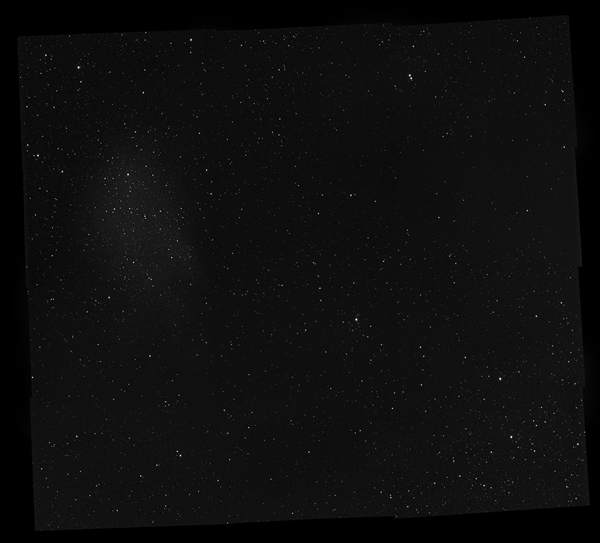© 2021 Michael A. Siniscalchi
SH2-216
Planetary Nebula in Perseus
RA:04h 45m 35s Dec: +46° 48' 35" Distance - ~420ly Size- 1.6 degrees
Click on image for a larger format
Click here to view the moon scaled and also identify white dwarf ALS 8032
SH2-216 is a very dim planetary nebula in the constellation Perseus and is the largest planetary in our sky measuring about 1.6 angular degrees and is over 3 times the size of our moon which measures 0.5 angular degrees. Hover over the image above to get the exact camera scale between the moon and nebula. With a distance of approximately 420 light years this is one of the closest planetary nebula to our galaxy. The dim surface brightness and large size is due to its age and diffusion. Planetary nebulas are formed when a dyeing star expels shells of ionized gas that when viewed, they have a roundish appearance like a planet. These nebula leave behind a very dense hot star called a white dwarf.
Per SIMBAD, the SH2-216 white dwarf star is ALS 8032 and is highlighted in the mouse over image link above.
This was a very challenging target due to its low surface brightness. Even using a camera with the very high QE KAF-3200 CCD I needed at least 4.5 hours of exposures for each of the 12 panels totaling 54 hours to get a decent Hydrogen-alpha (Ha) image. Oxygen (OIII) was barely visible in only a few frames. Total integration time of Hydrogen and Oxygen is 108 hours. Due to the size of the mosaic being 12 panels, my old dual core supporting only 2 threads and 16G of RAM PC wasn't up to processing the large number frames in a reasonable amount of time, so I upgraded to a more powerful Intel 6 core processor able to run with 12 threads plus 64G of RAM desktop. This made a huge improvement in processing the over 100 frames for each layer in a short amount of time. Astro Pixel Processor software made creating a mosaic less time consuming and did an excellent job with normalizing and aligning each mosaic panel with nicely blended seams. Ha and OIII data was used to create the RGB image so not all the star colors are accurate.
Hydrogen Alpha (Ha) - 4 1/2 hour exposure per each 12 mosaic panel bringing total integration time to 54 hours
Oxygen (OIII) - 4 1/2 hour exposure per each 12 mosaic panel bringing total integration time to 54 hours
This is the mosaic panel created by Sequence Generator Pro's mosaic tool.
Each frame overlaps its neighbor by 10% to allow the seams to blend.
Sequence Generator Pro calculated and assigned each frames RA & DEC coordinates to each panel.
The entire imaging session was automated. All I had to do was select the start and end times for each night and hoped that the clouds didn't arrive.
The bottom panels 5, 10 & 15 contained only stars hence were not imaged.


